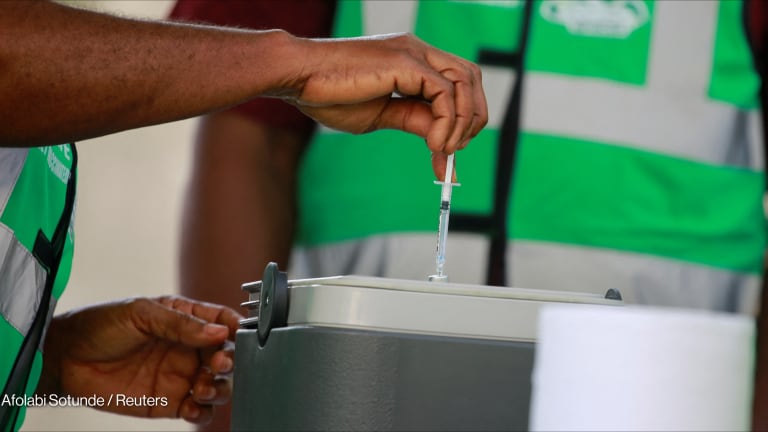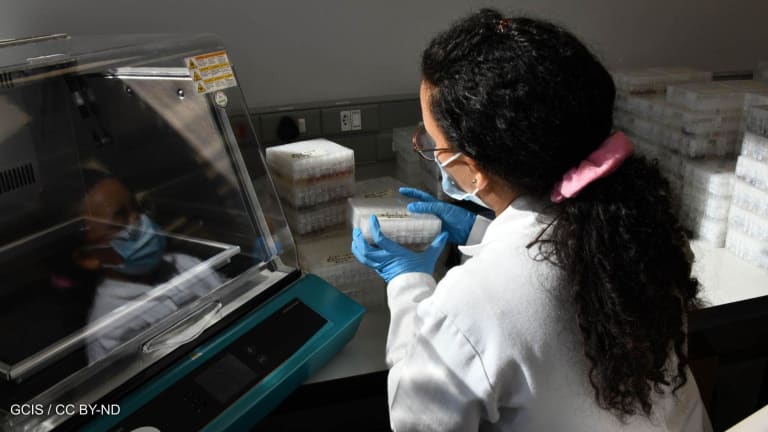
The global response to the novel coronavirus, known as 2019-nCoV, is being viewed in real time, on 24-hour news channels and radio stations as well as multiple social media platforms, with tweets and Facebook posts shared at breakneck speed across borders.
The rapid flow of information can be seen as a manifestation of the heightened awareness in the global health community that an infectious disease outbreak or pandemic was imminent. The outbreaks of severe acute respiratory syndrome, or SARS, in 2002 and Ebola in 2014 drew attention to the fact that infectious diseases do not respect borders.
The rumor mill spreading misinformation about the novel coronavirus has now been put into action, with claims of concoctions to cure people of the virus. The World Health Organization rapidly dispelled the rumors, urging countries to be proactive in putting into place an outbreak and risk communications strategy to update the public about coronavirus, combating misinformation.
The conception of “fake news” has brought with it a loss in the confidence people had in the media, and unfortunately, government institutions are increasingly scrutinized through a similar lens.
This brings to mind one of the challenges faced at the height of the 2014 Ebola outbreak. When the first case was reported in Nigeria, social media channels were advising people to protect themselves by bathing in and drinking a salt and water solution. In their desperation, many people in Nigeria took this poor advice, with devastating consequences.
Misinformation poses a threat to the global health community’s response to outbreaks, such as the prevention of coronavirus and pandemics, as the unfounded rumors have led to public hysteria, pushing some countries to take unilateral action. During the Ebola outbreak in the Democratic Republic of the Congo, for example, health workers came under attack, bearing the brunt of the distrust created between the government and local population.
With all these updates and multiple sources, who can the public trust to provide balanced updates as more is known about outbreaks?
The democratization of information
The internet has democratized access to information to a large degree. However, the challenge now is that multiple sources can provide information on any issue, making it difficult to identify which one is the most reliable or accurate.
With the latest outbreak of the novel coronavirus, the fear of misinformation is ever-present. Reporting has bordered on the sensationalist, with adjectives and superlatives such as “raging,” “ravaging,” “rampant,” and “mysterious” heightening the fear around the virus.
However, what is noticeable this time with the novel coronavirus is the rapid response of national public health institutes, such as the Nigeria Centre for Disease Control, disseminating information as more is known. Many have employed all possible communication channels at their disposal to release information, and public health figures have used opinion pieces, radio broadcasts, TV interviews, and press conferences to provide updates.
This goes back to the question of trust and whether the constant flow of information may confuse the public. There is also the possible danger of “information overload” and the public “switching off” — although this has not happened yet.
Inoculation against misinformation
Following the global panics around SARS and Ebola — as well as the resurgence of measles in many countries — the destructive effect of misinformation became clear and highlighted the need to combat the spread of rumors.
This is the time for “facts, not fear,” WHO chief Tedros Adhanom Ghebreyesus said in a statement last week. Science must not be undermined by rumors, and the very thing we hold dear — trust — must not be eroded. So how can you convince the public not to succumb to misinformation?
First, so-called inoculation theory may hold a possible solution: persuading people not to be persuaded. In practice, this means getting ahead of misinformation and countering its destructive effect by providing regular public health advisory notices and other information from WHO, national and regional public health institutes such as the Africa Centres for Disease Control and Prevention, and other sources that have access to the latest research on outbreaks.
Second, there is a collective effort to democratize access to the latest research as more details of the novel coronavirus are known. Research institutions in China and information analytics businesses are making a greater commitment to share data, knowledge, and research findings, with WHO coordinating the international response to the virus, which the organization has declared a public health emergency of international concern.
Information transparency by affected member countries should help strengthen the response — without overlooking the important role of risk communications to stem much of the panic around the virus. And the visible spirit of cooperation also helps build public trust that the global health community is working in collaboration.
Third, trust can be further reinforced if endeavors to protect the public — such as the development of a pipeline of vaccines — are communicated. Visible effort should also be put into preventive preparedness and not just emergency responsiveness.
And lastly, political leadership can further strengthen trust by ensuring that the virus is prioritized and that required funds are made available to accelerate the response.
To convince someone of something true, you need to keep repeating it — probably many more times than the untruths are repeated — and make sure to support it with all available evidence. Trusted sources of information, such as WHO and public health institutes, must remain visible across multiple communication channels, remaining vigilant for rumors and inoculating the public against misinformation.








